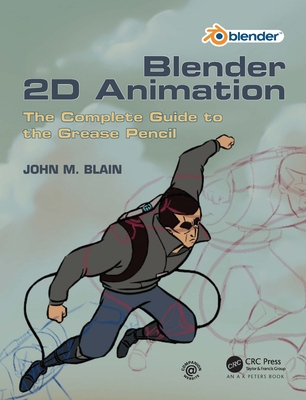A Practical Introduction to Hardware/Software Codesign 2/e (paper)
暫譯: 硬體/軟體共同設計實務入門 (第二版)
Patrick R. Schaumont
- 出版商: Springer
- 出版日期: 2014-12-13
- 售價: $4,020
- 貴賓價: 9.5 折 $3,819
- 語言: 英文
- 頁數: 504
- 裝訂: Paperback
- ISBN: 1489990607
- ISBN-13: 9781489990600
-
相關分類:
嵌入式系統
-
相關翻譯:
軟/硬件協同設計 (原書第2版) (簡中版)
-
其他版本:
A Practical Introduction to Hardware/Software Codesign 2/e (Hardcover)
海外代購書籍(需單獨結帳)
買這商品的人也買了...
-
 $1,000Advanced Digital Logic Design Using Verilog, State Machines, and Synthesis for FPGA's (Hardcover)
$1,000Advanced Digital Logic Design Using Verilog, State Machines, and Synthesis for FPGA's (Hardcover) -
 Learning From Data (Hardcover)
Learning From Data (Hardcover)$1,200$1,176 -
 Architectures for Computer Vision: From Algorithm to Chip with Verilog (Hardcover)
Architectures for Computer Vision: From Algorithm to Chip with Verilog (Hardcover)$4,980$4,731 -
 C++ 標準庫-學習教本與參考工具, 2/e
C++ 標準庫-學習教本與參考工具, 2/e$1,200$948 -
 Heterogeneous Computing with OpenCL 2.0, 3/e (Paperback)
Heterogeneous Computing with OpenCL 2.0, 3/e (Paperback)$2,880$2,822 -
 SystemVerilog Assertions Handbook : for Dynamic and Formal Verification, 4/e (Paperback)
SystemVerilog Assertions Handbook : for Dynamic and Formal Verification, 4/e (Paperback)$3,600$3,528 -
 優化 C++|提高程式效能的有效技術 (Optimized C++: Proven Techniques for Heightened Performance)
優化 C++|提高程式效能的有效技術 (Optimized C++: Proven Techniques for Heightened Performance)$680$578 -
 輕課程 快快樂樂學 AR影像魔法 - 使用 Unity 與 Vuforia 開發套件
輕課程 快快樂樂學 AR影像魔法 - 使用 Unity 與 Vuforia 開發套件$220$198 -
 $505Unity 3D\2D 手機遊戲開發:從學習到產品, 4/e
$505Unity 3D\2D 手機遊戲開發:從學習到產品, 4/e -
 Unity 遊戲設計育成攻略
Unity 遊戲設計育成攻略$560$476 -
 $267C++ 代碼整潔之道:C++17 可持續軟件開發模式實踐 (Clean C++: Sustainable Software Development Patterns and Best Practices with C++ 17)
$267C++ 代碼整潔之道:C++17 可持續軟件開發模式實踐 (Clean C++: Sustainable Software Development Patterns and Best Practices with C++ 17) -
 C++ Primer, 5/e (繁體中文版)
C++ Primer, 5/e (繁體中文版)$990$782 -
 C++ Templates 全覽, 2/e (C++ Templates: The Complete Guide, 2/e)
C++ Templates 全覽, 2/e (C++ Templates: The Complete Guide, 2/e)$1,200$948 -
 C++17 教學範本, 5/e (Beginning C++17, 5/e)
C++17 教學範本, 5/e (Beginning C++17, 5/e)$880$695 -
 基於 FPGA 與 RISC-V 的嵌入式系統設計
基於 FPGA 與 RISC-V 的嵌入式系統設計$708$673 -
 量子電腦程式設計 (Programming Quantum Computers: Essential Algorithms and Code Samples)
量子電腦程式設計 (Programming Quantum Computers: Essential Algorithms and Code Samples)$680$578 -
 深度探索 C++14 (Discovering Modern C++: An Intensive Course for Scientists, Engineers, and Programmers)
深度探索 C++14 (Discovering Modern C++: An Intensive Course for Scientists, Engineers, and Programmers)$768$730 -
 Practical UVM: Step by Step with IEEE 1800.2 (Paperback)
Practical UVM: Step by Step with IEEE 1800.2 (Paperback)$2,500$2,450 -
 Python × Network 一拍即合:自動化、程式化和 DevOps 的一站式解決方案 (Mastering Python Networking, 3/e)
Python × Network 一拍即合:自動化、程式化和 DevOps 的一站式解決方案 (Mastering Python Networking, 3/e)$780$608 -
 Python for DevOps|學習精準有效的自動化 (Python for Devops: Learn Ruthlessly Effective Automation)
Python for DevOps|學習精準有效的自動化 (Python for Devops: Learn Ruthlessly Effective Automation)$780$616 -
 提升程式設計師的面試力|189道面試題目與解答, 6/e (修訂版) (Cracking the Coding Interview : 189 Programming Questions and Solutions, 6/e)
提升程式設計師的面試力|189道面試題目與解答, 6/e (修訂版) (Cracking the Coding Interview : 189 Programming Questions and Solutions, 6/e)$980$774 -
 Architecting High-Performance Embedded Systems: Design and build high-performance real-time digital systems based on FPGAs and custom circuits (Paperback)
Architecting High-Performance Embedded Systems: Design and build high-performance real-time digital systems based on FPGAs and custom circuits (Paperback)$1,780$1,691 -
 Software Architecture with C++: Design modern systems using effective architecture concepts, design patterns, and techniques with C++20 (Paperback)
Software Architecture with C++: Design modern systems using effective architecture concepts, design patterns, and techniques with C++20 (Paperback)$2,043$1,935 -
 圖說演算法:使用 C++ (暢銷回饋版)
圖說演算法:使用 C++ (暢銷回饋版)$500$390 -
 $1,080Blender 2D Animation: The Complete Guide to the Grease Pencil
$1,080Blender 2D Animation: The Complete Guide to the Grease Pencil
相關主題
商品描述
This textbook serves as an introduction to the subject of embedded systems design, with emphasis on integration of custom hardware components with software. The key problem addressed in the book is the following: how can an embedded systems designer strike a balance between flexibility and efficiency? The book describes how combining hardware design with software design leads to a solution to this important computer engineering problem. The book covers four topics in hardware/software codesign: fundamentals, the design space of custom architectures, the hardware/software interface and application examples. The book comes with an associated design environment that helps the reader to perform experiments in hardware/software codesign. Each chapter also includes exercises and further reading suggestions.
Improvements in this second edition include labs and examples using modern FPGA environments from Xilinx and Altera, which will make the material in this book applicable to a greater number of courses where these tools are already in use. More examples and exercises have been added throughout the book.
“If I were teaching a course on this subject, I would use this as a resource and text. If I were a student who wanted to learn codesign, I would look for a course that at least used a similar approach. If I were an engineer or engineering manager who wanted to learn more about codesign from a very practical perspective, I would read this book first before any other. When I first started learning about codesign as a practitioner, a book like this would have been the perfect introduction.”
--Grant Martin, Tensilica--
商品描述(中文翻譯)
這本教科書作為嵌入式系統設計的入門書籍,重點在於自訂硬體元件與軟體的整合。本書所探討的關鍵問題是:嵌入式系統設計師如何在靈活性與效率之間取得平衡?本書描述了如何將硬體設計與軟體設計結合,從而解決這一重要的計算機工程問題。本書涵蓋了硬體/軟體共同設計的四個主題:基礎知識、自訂架構的設計空間、硬體/軟體介面以及應用範例。本書附帶一個相關的設計環境,幫助讀者在硬體/軟體共同設計中進行實驗。每一章還包括練習題和進一步閱讀的建議。
本第二版的改進包括使用來自Xilinx和Altera的現代FPGA環境的實驗室和範例,這將使本書的內容適用於更多已經使用這些工具的課程。整本書中增加了更多的範例和練習題。
「如果我在教授這個主題的課程,我會將這本書作為資源和教材。如果我是一名想學習共同設計的學生,我會尋找至少使用類似方法的課程。如果我是一名工程師或工程經理,想從非常實用的角度了解共同設計,我會首先閱讀這本書,而不是其他書籍。當我第一次開始作為實踐者學習共同設計時,像這樣的書籍將是完美的入門。」
--Grant Martin, Tensilica--











